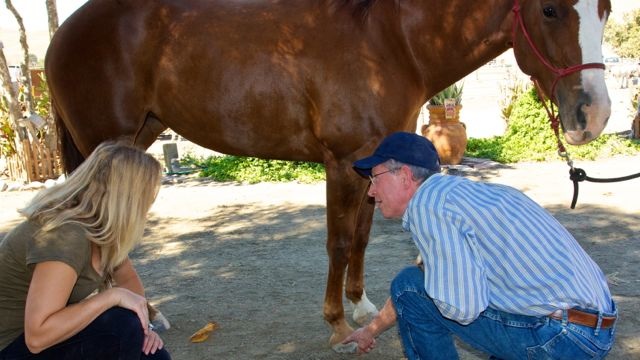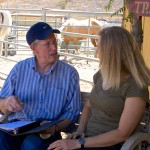How to begin managing your hoofcare income and workload.

Are you running your hoofcare business, or is it running you? Are your clients dictating your schedule, making some days too full and others not full enough? Do you find you’re driving more than working? Do you have a difficult time knowing how much income your business will generate?
If your farrier business is running you, it’s time to make a change.
Tracking where the business is now and using that to plan where it can grow to has been one of the most valuable exercises I’ve ever done. This is the first step of the method I used to tripple my income while maintaining a very manageable work schedule.
Advantages
There are many advantages gained from planning to average your workload on a day to day basis. Among them are the ability to project your income for the month, hoofcare cycle and year … to limit the amount of work each day to a manageable level … to have a consistent amount of work and income each workday … not becoming over tired and knowing you’re going to meet your income goals.
Another benefit is you can work towards your educational goals, planning time when you’re mentally fresh … opening the door to specialization and the possibilities of a significant boost in income.
You’re also able to spend time with clients without rushing, improving client relations and increasing your perceived value.
Here’s how I set it up.
Planning
Designing your business so it runs the way you want always begins with planning. Here are some of the questions to answer.
- Decide how many days you want to work each week and each cycle (4 wks, 6 wks, 8 wks).
- Decide how much gross income you want to earn each cycle and for the year.
- Decide how many horses can be seen each day with out your becoming exhausted.
- How many horses are needed to fit this plan. Is it workable? (Adjust it if not.)
- Decide on the types of client you want to work with.
- Decide on the types of horse you want to work on and the type of work you enjoy most.
- Figure out what’s needed to to make it work?
This will set up the projected work load to meet the desired income for the hoof care cycle and begin to identify the type of horse and client your business is moving toward.
Preparation and implementation
Begin scheduling future appointments to match the desired plan. Rearrange each days schedule seeking to average the work load. If horses are needed, plan how to find them, If there are too many, plan how to let them go gracefully or replace them with clients who move the business in the direction desired.
Tracking progress
Set up a calendar to track the difficulty of each day, income generated and the amount of work done. (I like a blank, generic monthly calendar.)
At the end of each day, record the days work on the calendar.
- List the total number of horses shod, reset and trimmed.
- Record the total income for the day.
- Mark the great days you’d like to repeat and the most difficult days in terms of income, time and exhaustion.
- Mark the easier, high income days as an example of what to replicate in the future.
- Mark the time consuming, difficult, tiring and lower income days as days to change so they fit the model of the average day you envision.
- Use a color coded system for ease. Green = a great day. Red = don’t do this again.
- Refer back to your daily log in your appointment book as a reference.
At the end of each week add the totals and average them.
- Add the totals for the week and average them.
- Add the number of days worked this week and average them.
- Add the total income generated this week and average it.
At the end of the month add all the averages from the week and average them.
- Record the average of the averages at the end of the month.
- To find the average income generated each work day, divide the number of days worked into the income generated.
- Record these numbers on the calendar.
At the end of the hoofcare cycle.
- Total the average numbers recorded at the end of each week.
- List the totals at the end of the calendar.
- Divide the number of days worked this cycle into the total income generated this hoofcare cycle.
- Record these numbers on the calendar.
You now have easy access to how much you earned this cycle, the number of days you worked, the average income generated each day, which were the best days and which were not desirable.
You know at a glance where your hoofcare business is now.
Use the calendar to compare how you’re actually doing with the projection of how you’d like to be doing. This gives information on how to adjust the number of horses in the schedule, how to even the work load out to avoid overload and inefficient days and what types of days were enjoyable, profitable and easy (worth planning to have more of in the future).
Save these calendar worksheets in a three ring binder along with notes about what made the great days great, and ideas on how to have more of them.
And …
What happened on the worst days and to how to avoid them in the future. Record the types of accounts that are very profitable and enjoyable. List ideas for finding more accounts like this.
You now have some very concrete information to plan for your business success and future growth.
Here’s to you becoming a very Successful Farrier!




